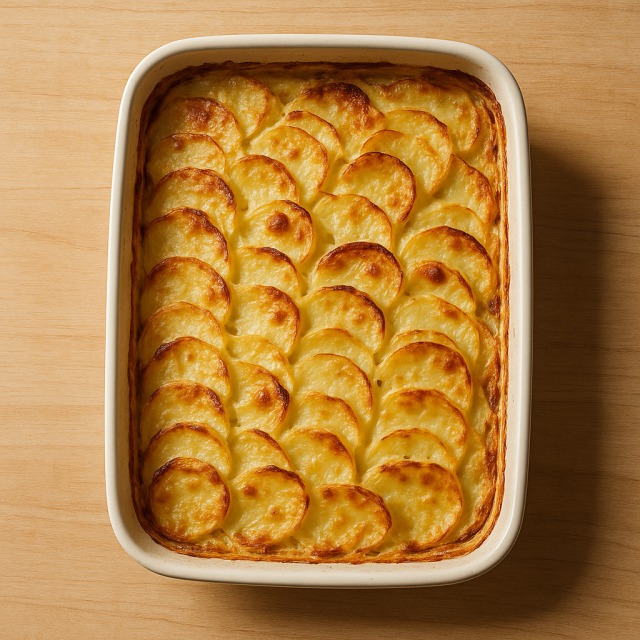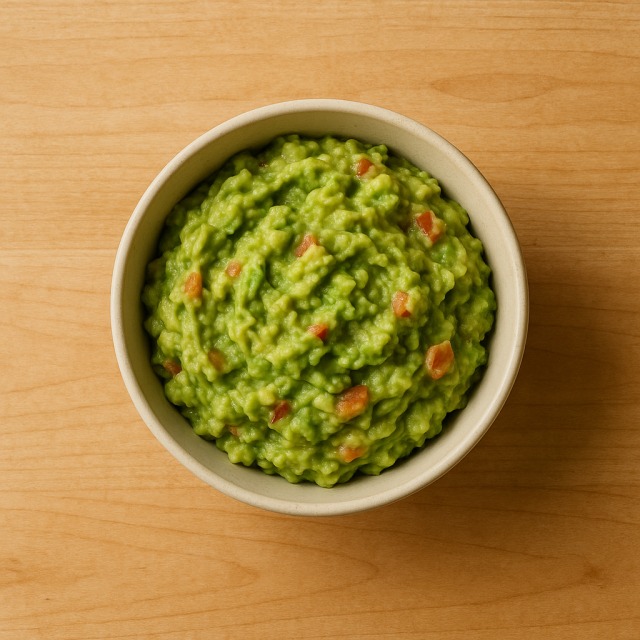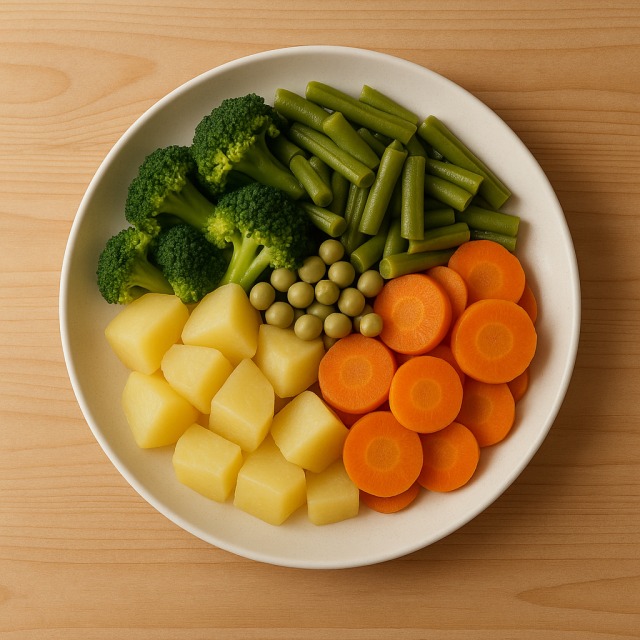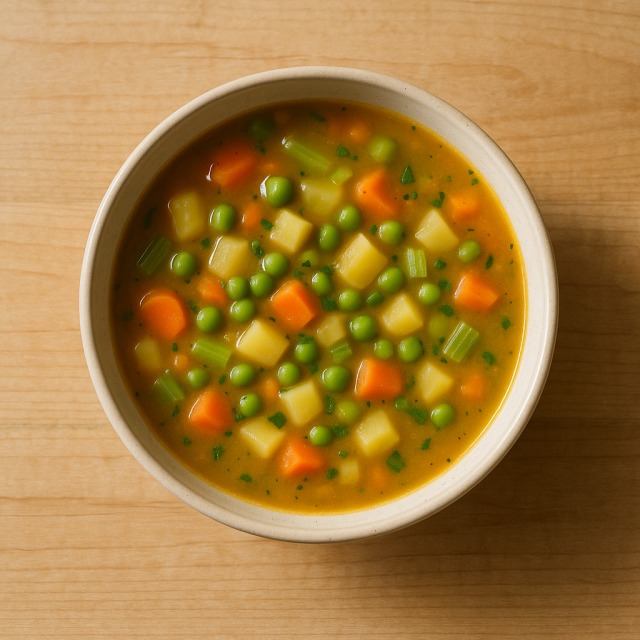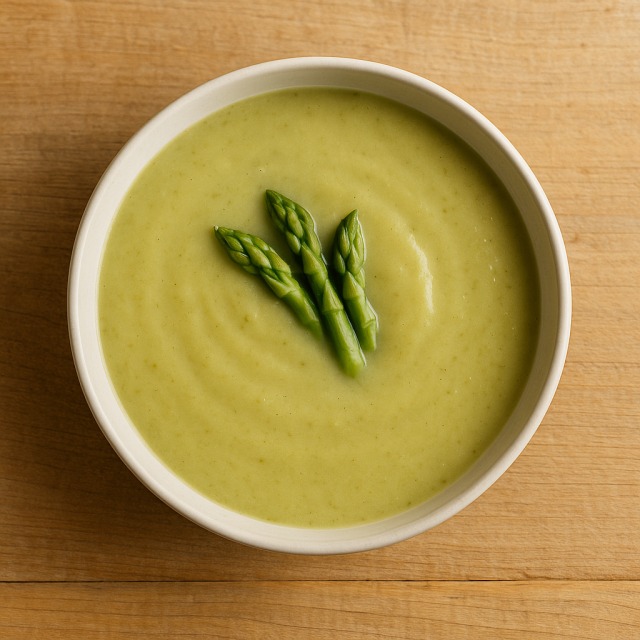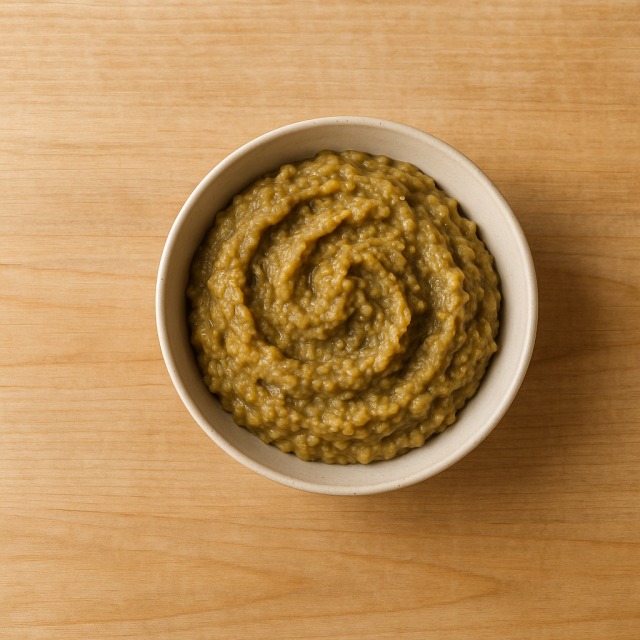Calorie Chart / Recipes / Celeriac remoulade
How Many Calories Are in Celeriac remoulade?
Calculation of the nutritional value & Recommended Dietary Intake of Celeriac remoulade
For g and a calorie requirement of kcal
| Calories 274 kcal | Proteins 1.6 g | Lipids 29 g | Carbohydrates 1.7 g |
| 14% | 2% | 43% | 1% |
Health benefits of Celeriac remoulade

Celeriac remoulade - 100g
Calories 274 kcal
Proteins 1.6 g
Lipids 29 g
Carbohydrates 1.7 g
Celeriac remoulade is a high-calorie starter: the creamy dressing pushes the calories far above those of plain celeriac. While rich in calories, the dish still brings interesting nutrients from the root itself, such as vitamin K, vitamin C, and vitamin B6, together with potassium and phosphorus. These micronutrients contribute to normal blood clotting, immune support, and electrolyte balance.
The rapeseed or sunflower oil traditionally used in the sauce supplies unsaturated fatty acids, including omega-9 and a little omega-3. When these oils replace saturated fats, they may support cardiovascular health (a supposed benefit that depends on the overall diet). The grated root also contains dietary fibre that helps satiety, even though the calories remain significant.
Celeriac remoulade appeared on French bistro menus in the late 19th century as an elegant way to turn a humble winter vegetable into a creamy salad. Knowing that it is a high-calorie rather than a low-calorie option helps you decide portion size. If you need dense calories for an energy boost—after a hike, for example—this preparation is convenient. Conversely, if you must limit calories, a small spoonful will go a long way.
Like other prepared salads such as Piémontaise salad or tzatziki, the final calorie count depends on the exact ratio of root to sauce. Choosing a lighter dressing can cut calories dramatically while preserving the fresh crunch.
Tips for incorporating Celeriac remoulade into a balanced diet
Because celeriac remoulade is already generous in calories and lipids, treat it as the fatty element of your plate. A common bistro pattern is to pair two heaped tablespoons with a lean protein like grilled chicken breast or a slice of steamed salmon; the protein balances the calories and adds satiety without extra fat.
If you want to keep calories under control, fold half-fat Greek yogurt or 0% fromage blanc into the mayonnaise: you will cut calories while keeping a creamy mouthfeel. Season with lemon juice, mustard, and fresh herbs.
For a complete lunch box, combine 100 g of celeriac remoulade with 120 g of cooked brown rice, a handful of arugula, and diced apple. The grains provide complex carbohydrates, the salad gives crunch, and the fruit lightens the palate—yet total calories stay moderate if you respect quantities.
In festive menus, serve a small quenelle of celeriac remoulade on blinis next to slices of smoked salmon. The contrast of smoky, acidic, and creamy notes feels luxurious without adding too many extra calories, provided you watch the portion size. Remember: counting calories does not mean sacrificing flavour—just balance the rich salad with lighter accompaniments.
Frequently Asked Questions
- How many calories in celeriac remoulade?
- There are 274 kcal per 100 g.
- Is celeriac remoulade too rich in calories for a diet?
- With 274 kcal and 29 g of fat per 100 g, it is calorie-dense. You can still fit it into a calorie-controlled plan by limiting the portion to 30–50 g and combining it with low-calorie foods such as cucumber or lettuce.
- How can I reduce the calories when I prepare it at home?
- Replace half the mayonnaise with plain yogurt or light mayonnaise. This simple swap can cut the calories of the dish by up to 40% while keeping the texture.
- Does celeriac remoulade fit a low-carb meal plan?
- Yes. It supplies only 1.7 g of carbohydrates per 100 g, so most of the calories come from fat. If you watch carbs rather than calories, it is acceptable—just be mindful of the overall calorie load.
- How long does homemade celeriac remoulade keep in the fridge?
- Stored in an airtight box at 4 °C, it keeps for 48 hours. After that, flavour deteriorates, and the risk of bacterial growth rises, regardless of calories.
Similar foods
Information provided by Calorie Menu may contain inaccuracies or errors. It cannot, under any circumstances, substitute medical advice or medication.
